My friend Slim passed away about fifteen months ago, and this weekend Lawrence and I went out to Pittsburg to clean out Slim’s “Dump,” a storage unit on which Maeve had faithfully been paying rent (bless her heart) until Cort and/or I could come back and empty it.
It doesn’t look like much from this view, but there were four grocery-store shelving fixtures and several additional shelves full of miscellaneous old electronics and miscellaneous other things. With the shelves broken down into flat pieces, the contents completely filled Lawrence’s 15-passenger van, floor to ceiling, with all the seats removed.
Here’s the back corner after all the shelves and most of the storage contents had already been removed. There was a fair bit of Southwest Technical Products equipment back there, which is of no particular interest to me but considerable interest to a couple of other people I’m in contact with. I’ll be going through all the cases and boards, sorting into SWTPC versus other stuff, and cataloging and photographing the items for a separate post.
There were several coils of what I believe Cort referred to as aluminum hard line antenna cable, which he also said is outdated and of no further use. Lawrence will take drop it off for scrap metal recycling next weekend unless by some miracle someone indicates they think it’s still worth something before then.
This TI Silent 700 hardcopy terminal with the dual cassette drives on top really tickles me. This DigiBarn post suggests they could upload and download content over the terminal line. I learned to program on teletypewriters on a timesharing system, and I have a soft spot for hardcopy terminals. The cassette drives are definitely icing on the cake. And I think I have about a dozen more of those drives, loose, from Slim.
The “silent” in the name refers to the thermal paper, by the way, and I’m not sure I like the idea. Using a hardcopy terminal wouldn’t really be the same without the distinctive clatter of the DECWriter pins against the flat metal platen, and the almost anthropomorphic sound of the printhead sliding slightly to the right, to get out of your way and let you see what had just been typed, each time the terminal was idle for a couple of seconds.
Mission accomplished. Just a few non-electronics items left for Maeve to deal with.
Back home and unloaded, here’s what appears to be a campus A/V distribution patch cabinet. It has what I think are SO-239 connectors on the top (I’m not a radio guy) and 1/4″ sockets on the bottom. I’d be happy to part with the SO-239 panels if someone had a use for them.
Although it looks messy now because whoever uninstalled it did so rapidly, the cables were very nicely routed and carefully bundled and laced with waxed string, an art that I fear has become lost.
Finally for today, my first treasure of this trip: an HP 122AR rackmount oscilloscope. Just last week, I was talking to Jeremy about installing a power inverter in my cargo van and setting up a gig box with a rackmount scope and some other tools for portable/mobile electronics troubleshooing and repair. If this works and it’s not too dep, it’ll be lovely for that! (Of course, I’ll have to make it clear that the gig box needs to be treated with care and not dropped out of the side of the van, but I think I can handle that.)
Looks like it has two channels, which is cool. For this application I’d be even more excited if it had two axes (great for troubleshooting vector arcade games, and I do have a couple of two-axis scopes already, just not rackmount), but I’m thrilled with what I got.
Now I need a few sunny evenings or Saturdays to photograph and catalog the rest of what we brought back. There’s a lot of stuff that looks no longer useful to me, and I’ll be willing to work something out to get it into the hands of the right people if it’s still useful to someone else, so I hope to post good pictures and descriptions in the coming weeks.
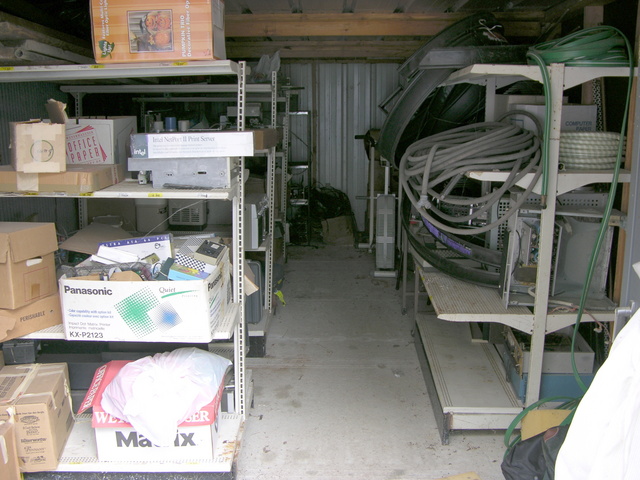
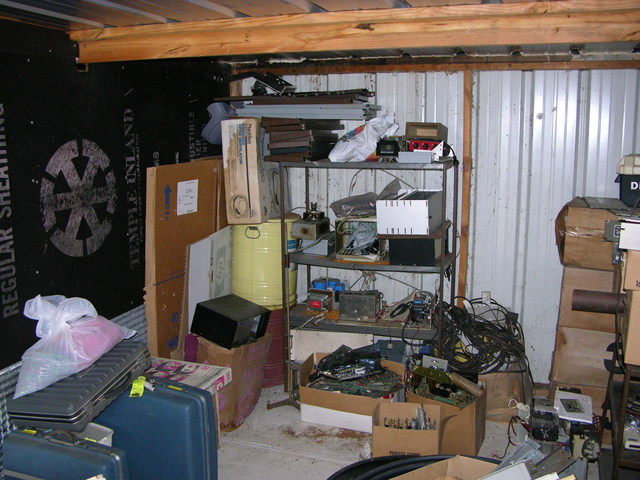
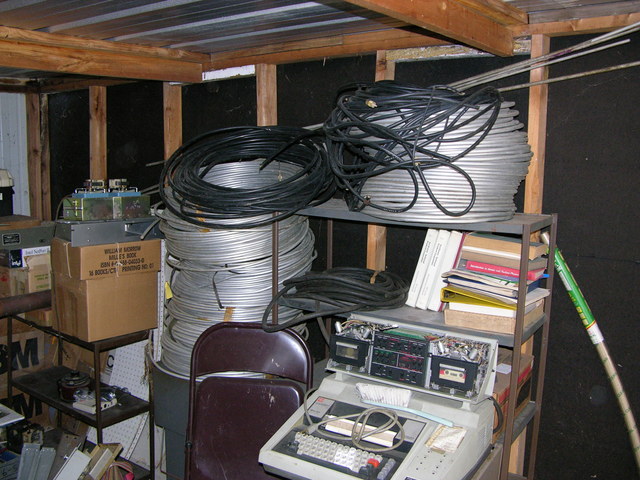
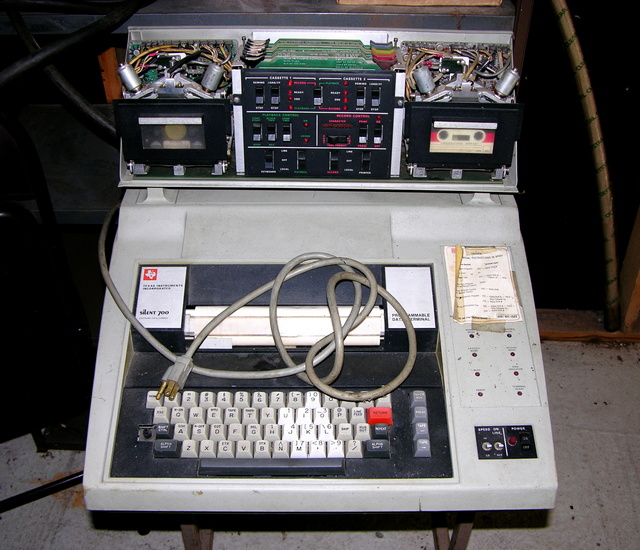
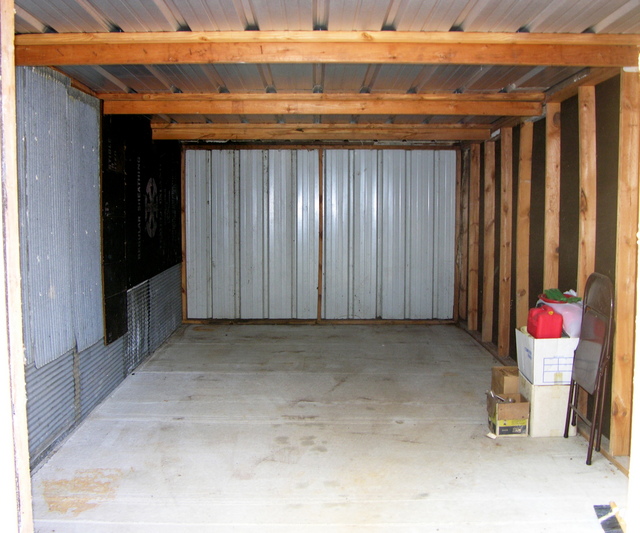
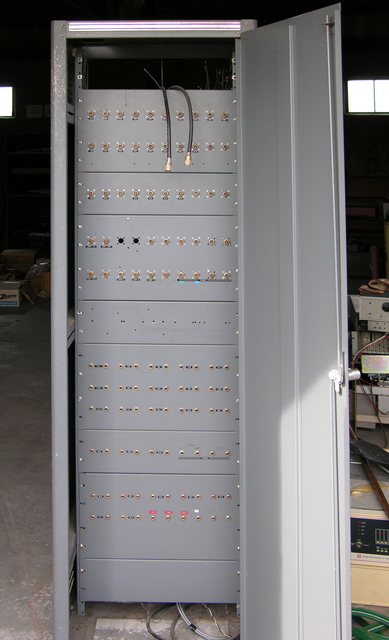
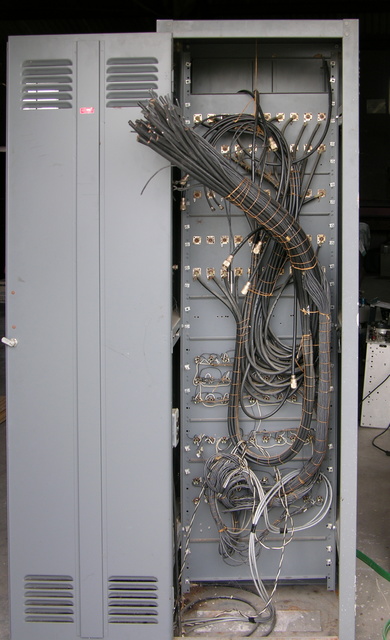
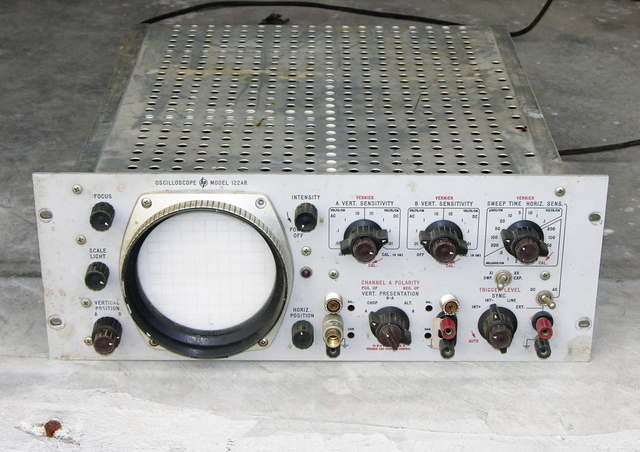
I work for a smaller CLEC in the midwest and all of our data center installs are laced with wax string. I happened to be at one of our sites when they put in a new phone switch 5 or so years ago and the installer (employed by the switch vendor, not local) laid all the cables out on the floor in the hallway and bundled them all perfectly and then carried them into place, ran the whole bundle as a single cable, then spun the cables down. It was beautiful when done. Definitely not a dead art =).
John, thanks for the anecdote! It made me smile to read of someone still lacing.
But . . . was it an older fellow, or are they teaching the young guys that, too?
I have no memory of what the guy looked like but I don’t think he was that old. I just think that wax string is the perfect solution for that job. It’s malleable without cutting into the sheathing, but it grips exceptionally well.
I don’t do installs anymore but in the wild west of our company I used to do server and data switch installs and it was a right of passage to be able to do lacing. The local staff would teach us how to do it (regular and running lacing) and then make us buy them beer if we screwed it up (usually by twisting the laces over each other). I’m in my thirties so the practice lives on.
I have wax string in my personal toolbox next to the duct tape. When I installed lighting in an old hutch for my wife this spring I laced all the wiring =).
I remember the Silent-700s. That wonderful thermal paper would slowly fade, making ancient printouts all but unreadable.
Of course, those of us in the industry know that the true input media is punched cards, and the true output media is watermelon paper.
As for the hardline, that may be quite in demand by certain amateur radio operators, since it usually has lower loss than even the best coaxial cable. The problem, though, are that connectors for hardline are usually terribly expensive, and it may have a non-standard characteristic impedance (75 Ohms versus 50 Ohms versus something weird). Plus, if it’s been stored improperly, it may have moisture contamination issues.
The SO-239 connectors look interesting, but the shipping would probably preclude them going very far. Also, they appear to be the common bakelite variety, rather than the Silver-plated/teflon-insulated variety that are the premium connectors (Ok, so I’m a connector connoisseur!).
The SWTP stuff could be quite interesting to a collector (which I’m not, despite lusting after a SWTP 6800 system in the 1970s).
As for the power inverter in the van driving the test equipment, make sure you calculate the power consumption requirements carefully. Pulling what seems like a very reasonable amount of power to run some test equipment can quickly lead to some ridiculous currents at 12 Volts, which can deplete even a van sized battery very shortly (leaving you stranded at a remote/desolate location). Maybe it’d be better to install an auxiliary battery, just to run the inverter, saving the main vehicle battery for starting purposes. As an added benefit, you can make the auxiliary/inverter battery a deep cycle battery (since deep cycling a starting type battery will quickly kill it).
Dave
If you want to sell any of the SWTPC stuff, please send me an email.
I worked there in 1977-78 while going to college. I never had enough to buy anything .
.
I worked in the computer repair department and also did the assembly instructions for the hard drive kit.
Doc McClenny
Doc, I’ll certainly keep you in mind.
I think there’s only one computer, then I believe several peripherals, and a bunch of circuit boards that were near the other stuff and may or may not have anything to do with SWTPC. I should know more in a weekend or two.
My best friend is a huge OS-9 fan and always wanted an SWTPC, and I’ve already been in contact with the maintainer of the Internet SWTPC repository, so I can’t promise there’ll be much to go around, but we’ll see how it works out.
Hi Keith,
While Cort and you were cleaning up the storage unit, did you by chance stumble across the schematic – or anything remotely like it – for Slim’s Prototyping Station?
I’m still hoping you’ll come across some day.
Thanks!
Jim.
Jim, hope springs eternal!
Nope, no paper goods in this storage. They would have been at Slim’s office at the school — and I understand the local radio club has already gone through that. Which is to say, we don’t have any schematics, and we’re probably not going to have another opportunity to go through his office.
By the way, Cort wasn’t with me this weekend. Had help from another friend, just for the record.